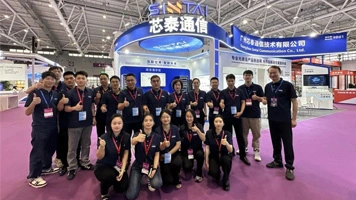In the modern communication field, optical fiber communication technology has become an important foundation supporting information transmission. In optical fiber communication systems, the OTU optical transponder unit plays a crucial role. This article will introduce the OTU optical transponder unit's basic principles and classifications, as well as its key role in achieving efficient optical communication.
According to the position and function of the OTU optical transponder unit in DWDM systems, it can be divided into transmitter OTU, repeater OTU, and receiver OTU. The task of the transmitter OTU is to convert the wide-spectrum optical signal sent by the terminal channel equipment into a narrow-spectrum optical signal that meets WDM requirements. This allows multiple signals of different wavelengths to be transmitted simultaneously over the optical fiber, improving the utilization of the fiber. The repeater OTU is mainly used as a regeneration repeater, performing not only optical/electrical/optical conversion and realizing 3R functions (re-timing, re-shaping, re-amplifying), but also monitoring the regeneration section overhead bytes, such as B1 for regeneration section error monitoring. This ensures the quality and stability of the signal during transmission. The task of the receiver OTU is to convert the optical signal sent by the optical demultiplexer into a wide-spectrum general optical signal for interconnection with other equipment. The receiver OTU is interchangeable between different channels, but the combined transceiver OTU is not interchangeable.
Secondly, based on whether there is conversion in the optical/electrical domain during the signal conversion process, the OTU optical transponder unit can be divided into optical-electrical-optical wavelength converters and all-optical wavelength converters. Optical-electrical-optical wavelength converters refer to the optical signal first undergoing optical/electrical conversion, then electrical/optical conversion, and finally being converted into an optical signal of the target wavelength. All-optical wavelength converters keep the optical signal entirely in the optical domain during the conversion process without going through optical/electrical conversion. These converters can achieve faster conversion speeds and lower signal losses, but due to technical limitations, all-optical wavelength converters are relatively complex to implement.
The OTU optical transponder unit plays an important role in optical fiber communication systems. Through the proper configuration of transmitter OTU, repeater OTU, and receiver OTU, wavelength conversion and regeneration of optical signals can be achieved, improving the utilization and transmission quality of the optical fiber. At the same time, based on whether there is conversion in the optical/electrical domain during the signal conversion process, we can choose optical-electrical-optical wavelength converters or all-optical wavelength converters to meet the needs of different application scenarios.
As one of the key technologies for achieving efficient optical communication, the OTU optical transponder unit provides greater flexibility and reliability for our communication network. With continuous technological advancement, we believe the OTU optical transponder unit will play a more important role in the future optical communication field, bringing more convenience and possibilities to people's lives and work.


